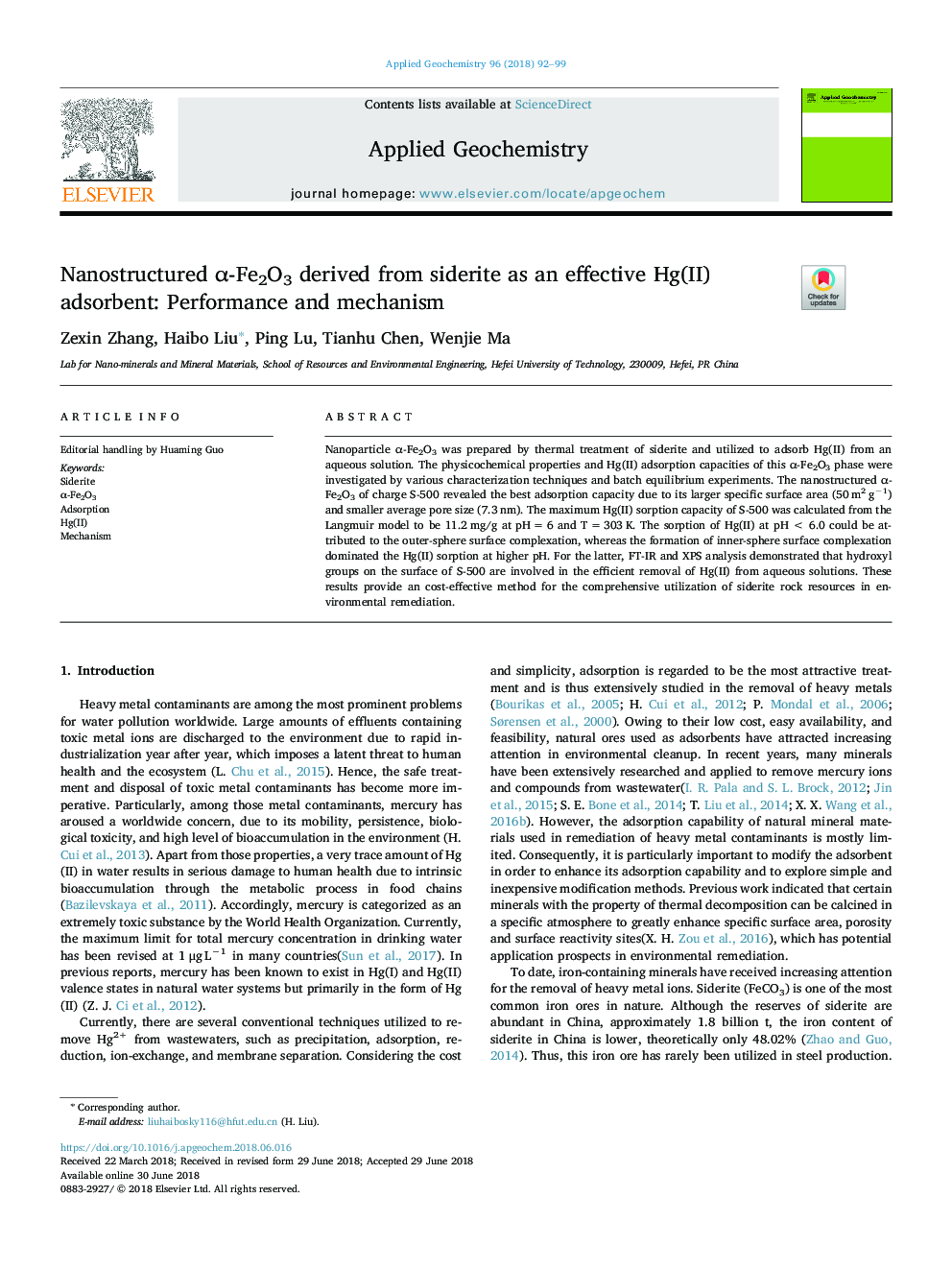| Article ID | Journal | Published Year | Pages | File Type |
|---|---|---|---|---|
| 8863033 | Applied Geochemistry | 2018 | 8 Pages |
Abstract
Nanoparticle α-Fe2O3 was prepared by thermal treatment of siderite and utilized to adsorb Hg(II) from an aqueous solution. The physicochemical properties and Hg(II) adsorption capacities of this α-Fe2O3 phase were investigated by various characterization techniques and batch equilibrium experiments. The nanostructured α-Fe2O3 of charge S-500 revealed the best adsorption capacity due to its larger specific surface area (50â¯m2â¯gâ1) and smaller average pore size (7.3â¯nm). The maximum Hg(II) sorption capacity of S-500 was calculated from the Langmuir model to be 11.2â¯mg/g at pHâ¯=â¯6 and Tâ¯=â¯303â¯K. The sorption of Hg(II) at pHâ¯<â¯6.0 could be attributed to the outer-sphere surface complexation, whereas the formation of inner-sphere surface complexation dominated the Hg(II) sorption at higher pH. For the latter, FT-IR and XPS analysis demonstrated that hydroxyl groups on the surface of S-500 are involved in the efficient removal of Hg(II) from aqueous solutions. These results provide an cost-effective method for the comprehensive utilization of siderite rock resources in environmental remediation.
Related Topics
Physical Sciences and Engineering
Earth and Planetary Sciences
Geochemistry and Petrology
Authors
Zexin Zhang, Haibo Liu, Ping Lu, Tianhu Chen, Wenjie Ma,
